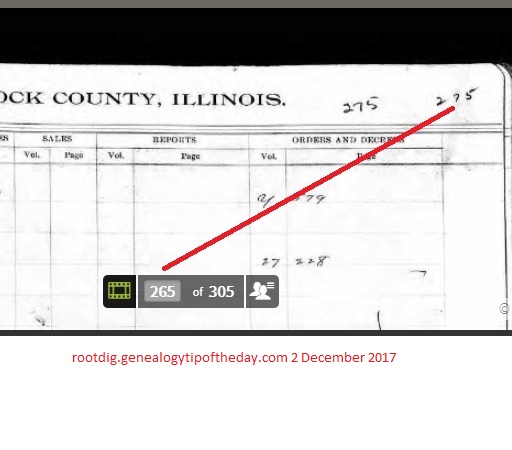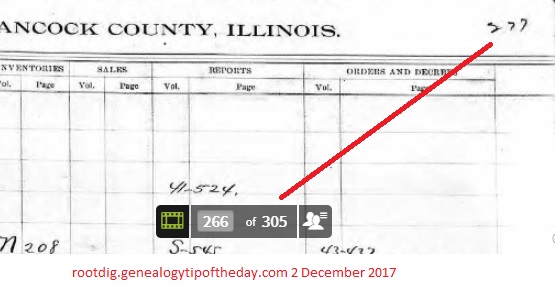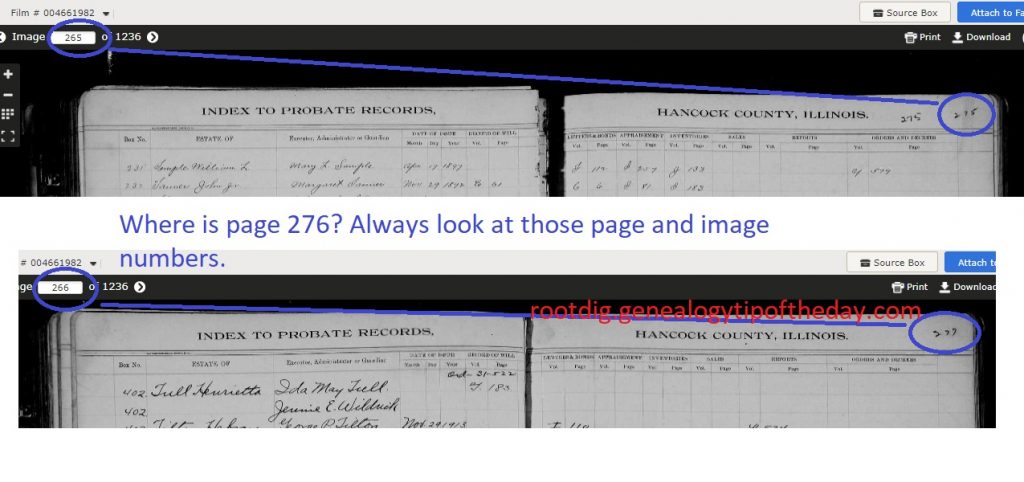You would think Adam and Eve would be on the first page of an index to anything. Not true. They are on the mysterious page 276.
Always manually check digital images when you think something is missing.
I was looking for probate information in Adam Trautvetter who died in the early 1900s in Hancock County, Illinois.
Because I’ve used these records a great deal and because Ancestry.com has indexed them for the time period in question, that’s where I start if I need something quickly. Simply because it’s faster–not because the index is perfect. My back up plan is always to manually search the digital images of these records at FamilySearch and, failing that, search the actual records onsite. I never say “it’s not there” until I’ve done all three steps and sometimes, even when I find it online or on microfilm, I may still go and view the records manually–just in case.
A reference to a probate packet for Adam did not come up with searching the Illinois probate records on Ancestry.com, although one probate journal entry for his estate was located. Frustrated and thinking that Trautvetter was horribly mis-indexed, I decided to search the images of the probate index that was kept by the circuit clerk. That index, kept by “locals,” was likely to have Adam’s estate indexed in the appropriate section.

Except that the page of the index where it should be was missing.
I almost did not notice the page was missing at first.
But the manually created probate index did not have an entry for Adam or his wife Eve, who died a few years after him. I knew Eve had a probate case file as I had seen it digitally on Ancestry.com (and in the actual courthouse years ago). When I looked at the “date of issue” (usually for letters of administration or approval of executor), I noticed a gap from about 1905 to 1913.
Now…the estates are not listed in the index in exact chronological order of the years of “issue.” There’s some variation based on when the estate was closed and when the index entry was created. But that was too big of a gap.
Then I looked at the page numbers on the index. The “page” with a last “issue” date of 1905 was page number 275. The next “page” with an initial “issue” date of 1913 was page number 277. I had not skipped an image as page 275 was image 265 and page 277 was image 266. I was not dreaming.

The same record is on FamilySearch. I looked there hoping that Ancestry.com had made an error.
Nope.

It’s possible that the page is on the microfilm. I’ve not had someone actually check at the Family History Library in Salt Lake. I never noticed this before because the last time I looked for Trautvetter estate for someone who died between around 1905 and 1915, I was in the actual courthouse. That’s a pretty narrow type of search.
I know the courthouse has the actual index page.
One always has to check the actual images of records to see if anything was missed–that could be why it cannot be located. Humans make mistakes. Sometimes those mistakes are not noticed until much later. And when the mistakes are small it can take a while to notice them. That’s why researchers should search manually when things do not appear in the index.
Because even pages of the index can be overlooked.

One response
Thank u for that very interesting piece of information. That helps me a lot in looking for new information in a new place. I was trying to figure out a local problem & remembered something you had said a while back about looking in a different place locally. That made me smile knowing that I actually remembered.